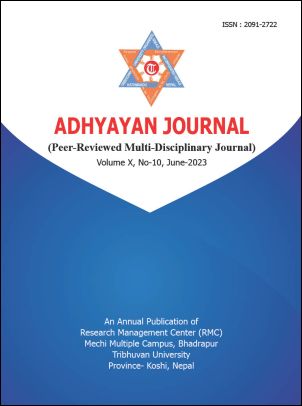Contrastive analyses of the Nepali and Newari languages
DOI:
https://doi.org/10.3126/aj.v10i10.57400Keywords:
Exclusion, comparability, comprehensibility, significance, error analysisAbstract
This article concentrates on analyzing the differences between Nepali and Newari using the method of contrastive analysis. Consequently, the conclusion reached by analyzing the differences between the phonological, grammatical, and semantic aspects of the Nepali and Newari languages is presented in this article using the comparative and analytic methods provided by the difference analysis method. When it is difficult for a native speaker to learn a second language, the difference between the two languages is greater, and when it is smaller, it is simpler for him to learn the difference. Based on this supposition, it appears difficult for a native Newari speaker to learn Nepali and a native Nepali speaker to learn Newari, as there are more differences than similarities between these two languages. By identifying the phonological, grammatical, and semantic differences between these two languages and by identifying the errors caused by these differences, as well as by implementing measures to correct the errors, it is very simple for Newari native speakers to learn Nepali and for Nepali native speakers to learn Newari.




